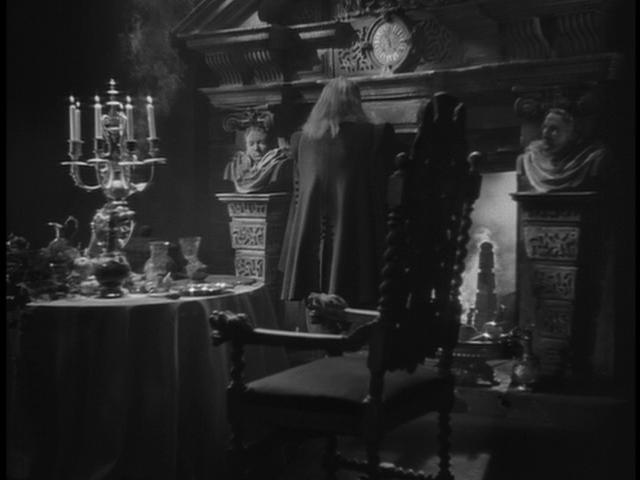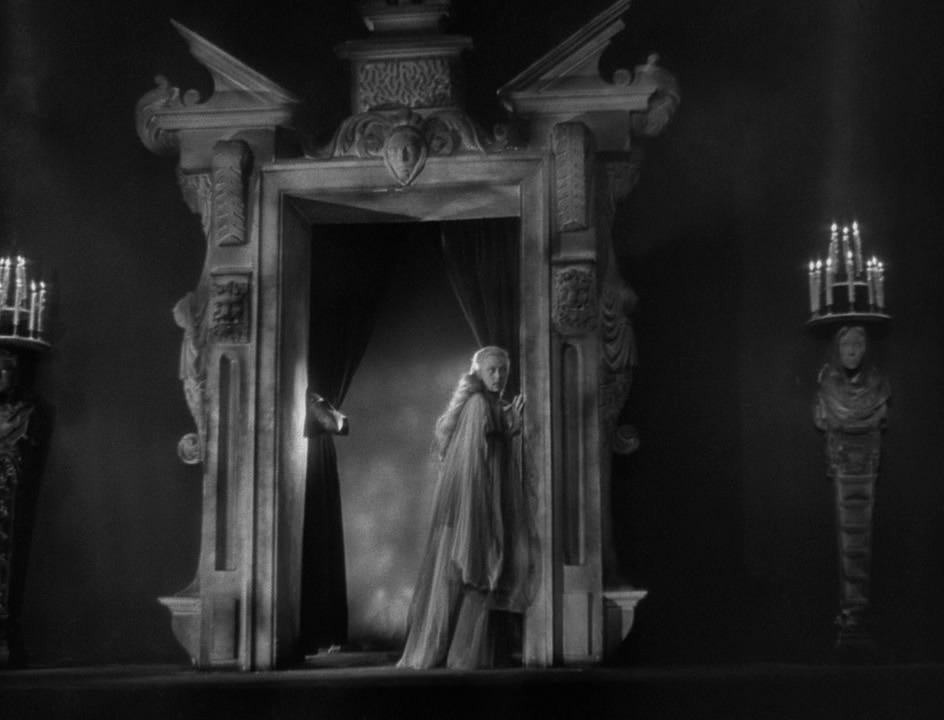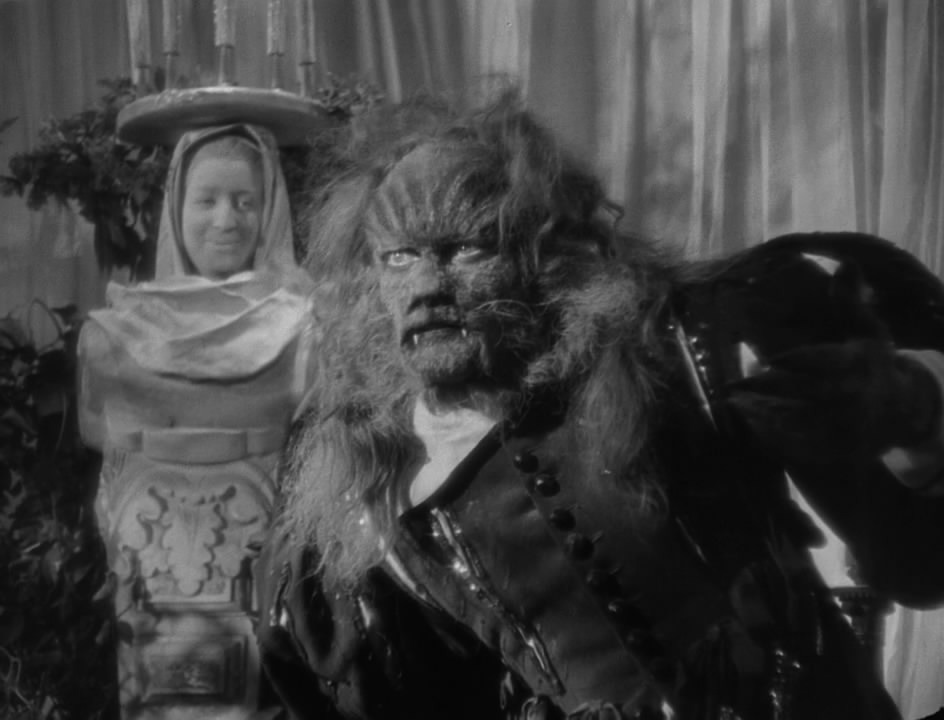 |
| Belle's father, the merchant, first arrives at the castle. The bracket attaching the candelabra to the wall is actually an actor's arm. |
 |
| Though the idea of servants being reduced to nothing more than a pair of hands was borrowed from La Chatte Blanche, it was their visual representation in this film that had a direct impact on the animated Disney version that came out forty-five years later. |
 |
| Note the human heads as accent pieces on the fireplace. How is this dude maintaining his composure, i.e., not totally freaked out by ANIMATE STONE PEOPLE? |
 |
| Their arms must have gotten really tired. It was worth it for the effect, though. The set looks surreal. |
 |
| Carved human likenesses are everywhere throughout the castle, as if to mock The Beast's curse. Can't have been too comfortable for Belle, either. |
 |
| "Hey guuurl, I heard you like magical roses..." Heads that turn and eyes that watch the inhabitants of the castle lend a touch of otherworldliness to the film. |
 |
| Nature has a large role in many fairy tales. Here, vines cover the walls of Belle's bedroom; a profound image which helps to create a magical atmosphere. |
This is a remarkable foreign film, listed as one of the top twenty films of the 1940s. Josette Day as Belle and Jean Marais as The Beast/The Prince/Avenant instilled their roles with equal amounts fantasy and believability. According to Bio, Cocteau is revered as "one of the most influential creative figures in the Parisian avant-garde," and La belle et la bête is one of his most-loved works. Watch it yourself to find out why.
For more information: